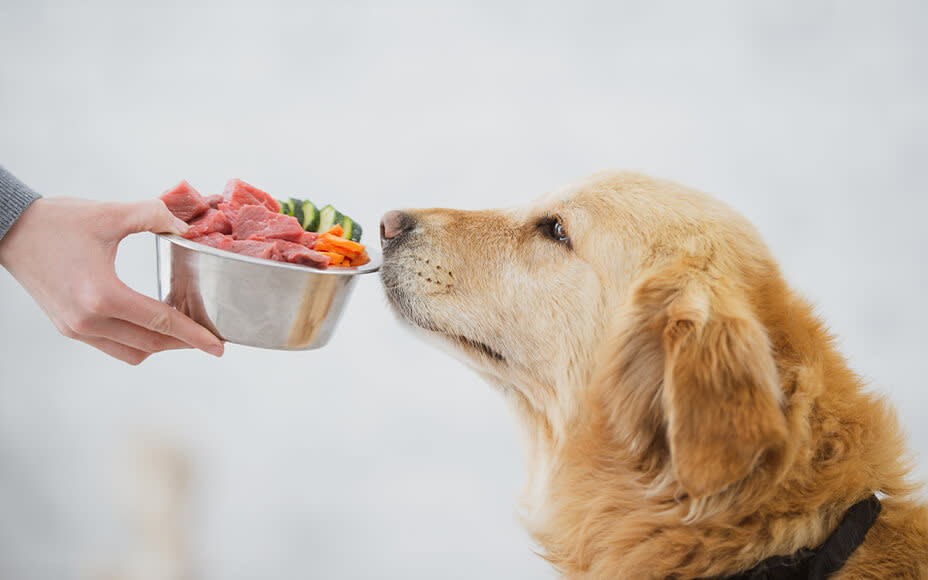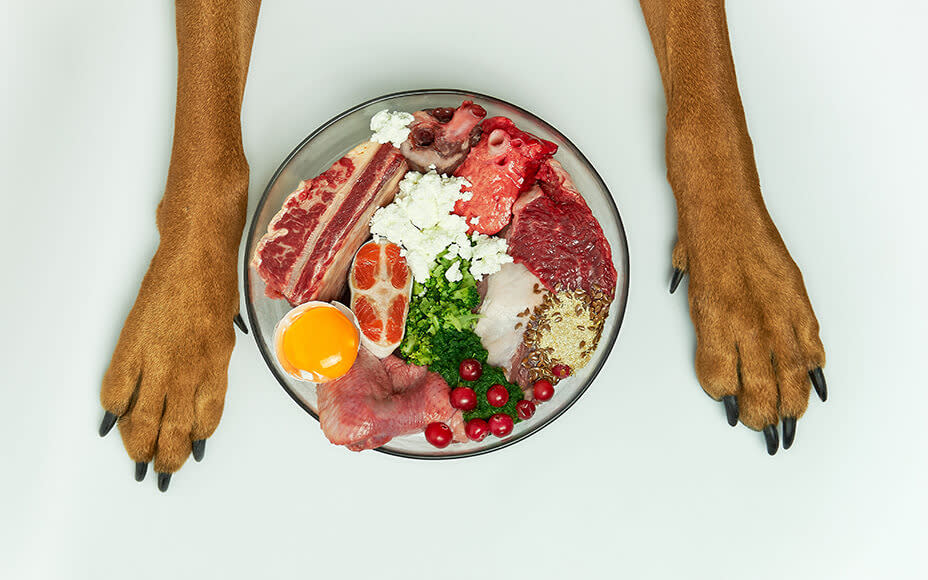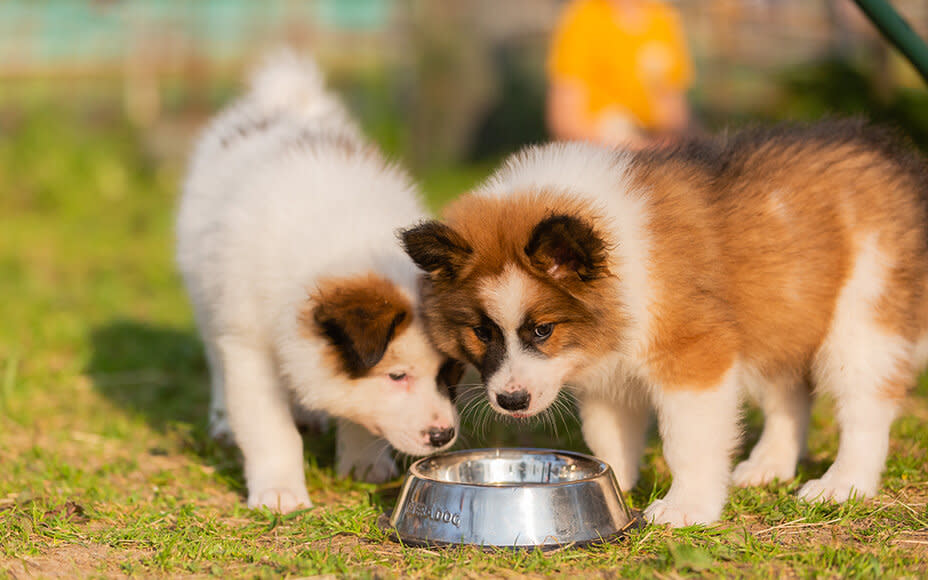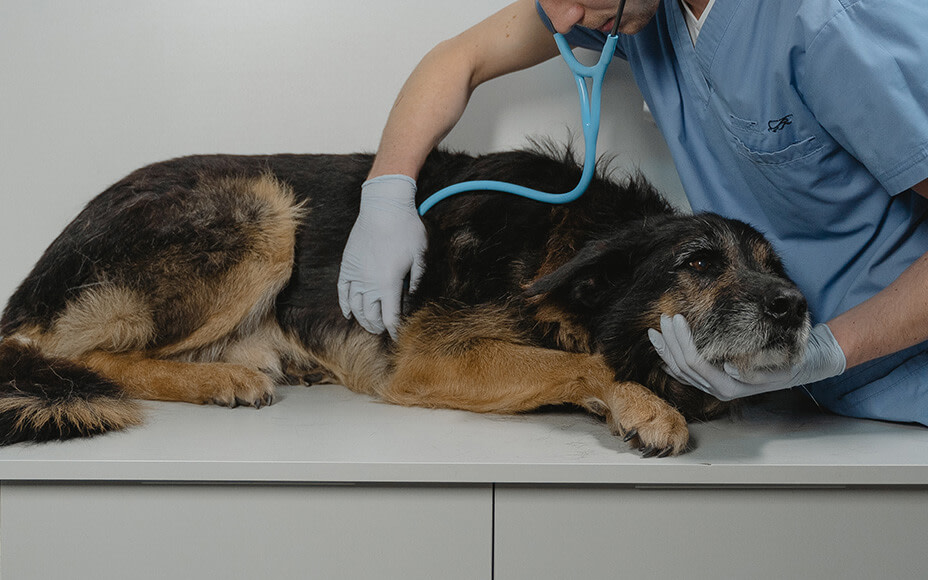Are vegetables really appropriate for dogs, and what types can dogs eat? Learn everything about feeding vegetables to your dog.
- Feeding vegetables to your dog – is it species-appropriate?
- Which Vegetables Can Dogs Eat?
- Vegetables for Dogs that Can Be Eaten Raw
- Vegetables for Dogs that Can Be Cooked, Steamed, or Boiled
- Toxic Vegetables that MUST NOT Be Fed to Dogs
- Help, My Dog Ate Toxic Vegetables!
- Which Vegetables are Good for Dog Digestion?
- How Much Vegetables Can a Dog Eat?
Feeding vegetables to your dog – is it species-appropriate?
“Dogs are carnivores” – what do carrots, broccoli, and company have to do in your furry friend’s bowl? Well, quite a lot! Even though our dogs are descendants of wolves and therefore enjoy a juicy piece of meat between their teeth, vegetables are also part of a species-appropriate and balanced diet for dogs.
Let’s take a look at the wolf’s menu, and it becomes clear that it doesn’t just pick out the tender muscle meat but devours its prey with skin and hair, including cartilage and organs, along with plant remains in the prey’s stomach. Its daily menu is supplemented with fruits like berries or other greens, which is why dogs are classified as meat and omnivores (“carni-omnivor”).
Therefore, feeding vegetables and fruits to our four-legged friends is essential. Just like us humans (and wolves), they depend on the vitamins, fibers, and trace elements contained in vegetables. Thus, feeding vegetables contributes to maintaining your furry friend’s health and can even lead to deficiencies and health restrictions with insufficient intake.

Which Vegetables Can Dogs Eat?
But before you rush to the next vegetable aisle in the supermarket, please note that not all vegetable varieties that are tolerable for us humans are suitable for your furry friend. It’s also important to mention that in a high-quality complete dog food, all essential nutrients are already included. Meat, vegetables, fruits, fats, and minerals are usually present in sufficient quantities and generally don’t need additional supplementation.
Only the best of the best goes into our food too. Along with succulent meat, our range includes various vegetables such as carrots, broccoli, pumpkin, fennel, sweet potatoes, celery, beets, and much more. Come take a look and discover your furry friend’s new favorite food!
Vegetables for Dogs that Can Be Eaten Raw
These vegetables can be fed to your dog raw without any issues. They usually aren’t bloating and, when chopped or pureed, are easily digestible.
- Chicory
- Chinese cabbage
- Fennel
- Cucumber
- Carrots
- Kohlrabi
- Beets (in small amounts, but not with kidney diseases or bladder stones)
- Asparagus
- Celery stalks
- Leafy greens like lettuce, iceberg lettuce, lamb’s lettuce, loose-leaf lettuce
If your dog isn’t used to occasionally eating raw vegetables, start with a small amount and gradually increase. Due to the numerous fibers in vegetables, it can sometimes lead to stomachaches.
Quick tip:
Feed raw vegetables to your dog with a bit of oil for better nutrient absorption.

Vegetables for Dogs that Can Be Cooked, Steamed, or Boiled
These vegetables should be cooked, steamed, or gently boiled before feeding. Some of them might be hard on your dog’s stomach otherwise and can lead to digestive problems. By gently preparing them, you ensure your furry friend gets the full vitamin load without any discomfort!
- Amaranth
- Cauliflower
- Broccoli
- Kale (only in small quantities)
- Millet
- Potatoes and Sweet potatoes
- Pumpkin (only from the supermarket)
- Lentils
- Corn (no field corn and no cobs!)
- Certain mushroom varieties like mushrooms, porcini mushrooms, chanterelles
- Spinach
- Zucchini (only from the supermarket)
Toxic Vegetables that MUST NOT Be Fed to Dogs
As mentioned earlier, there are vegetables that you might enjoy but are not well-tolerated or can even be poisonous to your furry friend. To ensure that nothing harmful lands in your dog’s bowl at home, take a close look at the following vegetable varieties:
- Eggplants (small amounts can be tolerated when cooked)
- Avocados
- Raw green beans
- Raw legumes
- Garlic and other allium vegetables
- Bell peppers
- Onions and other allium vegetables
Did you know that raw tomatoes are not necessarily toxic to dogs? This is a myth. Only unripe, i.e., green tomatoes, contain the toxin solanine, which is toxic to our four-legged friends (and us humans). Very ripe tomatoes, on the other hand, contain little to no solanine, but they are usually challenging for our dogs to digest. If digestive problems and vomiting occur due to the consumption of ripe tomatoes, it may be mistakenly interpreted as symptoms of poisoning.

Help, My Dog Ate Toxic Vegetables!
Your dog has helped itself to bell peppers or another “forbidden vegetable”? Depending on your furry friend’s size and weight, the first symptoms of poisoning can set in pretty quickly. Initial signs of poisoning include heavy panting, restlessness, and trembling.
But don’t panic; now a clear head and prompt action are crucial! In a veterinary clinic, your dog will be induced to vomit using an injection, allowing the toxic vegetables to be expelled as quickly as possible. It’s important not to take matters into your own hands – do not attempt to make your dog vomit yourself. Home remedies are also toxic to dogs and therefore strictly off-limits.

Which Vegetables are Good for Dog Digestion?
If your furry friend has a sensitive stomach, you can preferably turn to vegetables like pumpkin, zucchini, carrots, and potatoes. Peeled, cooked, and then pureed, they are easily digestible and gentle on the stomach.
Carrots, rice, and chicken cooked together make a soothing bland diet that you can feed to your furry friend for 3-5 days if they are struggling with vomiting or diarrhea. Need a quick solution and no time to cook yourself? Just open a can of our special Wet Food “Vet” Stomach & Digestive Fit with chicken, cottage cheese, and rice.
How Much Vegetables Can a Dog Eat?
If you want to feed vegetables to your dog regularly, you should adjust the amount to your furry friend’s daily nutritional needs. If you’re feeding your dog dry or wet food, all individual components such as proteins, vitamins, carbohydrates, minerals, fats, fibers, and trace elements are already present in sufficient quantities. This means that everything you feed your dog in terms of vegetables should be considered an additional supplement, which might not be straightforward with a complete ready-made meal. Therefore, when it comes to an occasional carrot or a piece of kohlrabi, it’s best to keep it simple.
If you want to feed vegetables regularly and in larger quantities, the BARF (Biologically Appropriate Raw Food) concept might be suitable for you. With BARF, you prepare your dog’s food fresh, assembling the meal’s components like meat, vegetables, and carbohydrates yourself. The respective amounts must be tailored and individually weighed based on your dog’s needs.
Sounds too complicated for you? BARF enthusiasts swear by this feeding method once they get the hang of it, but we understand if it seems too time-consuming for you. That’s why we’ve developed “BARF Complete,” allowing you to feed your dog easily and simultaneously with delicious, fresh ingredients. The menu already contains everything your furry friend needs daily: fresh meat, fruits and vegetables, as well as minerals and oils. All pre-weighed and portioned, super fresh, and tasty!


